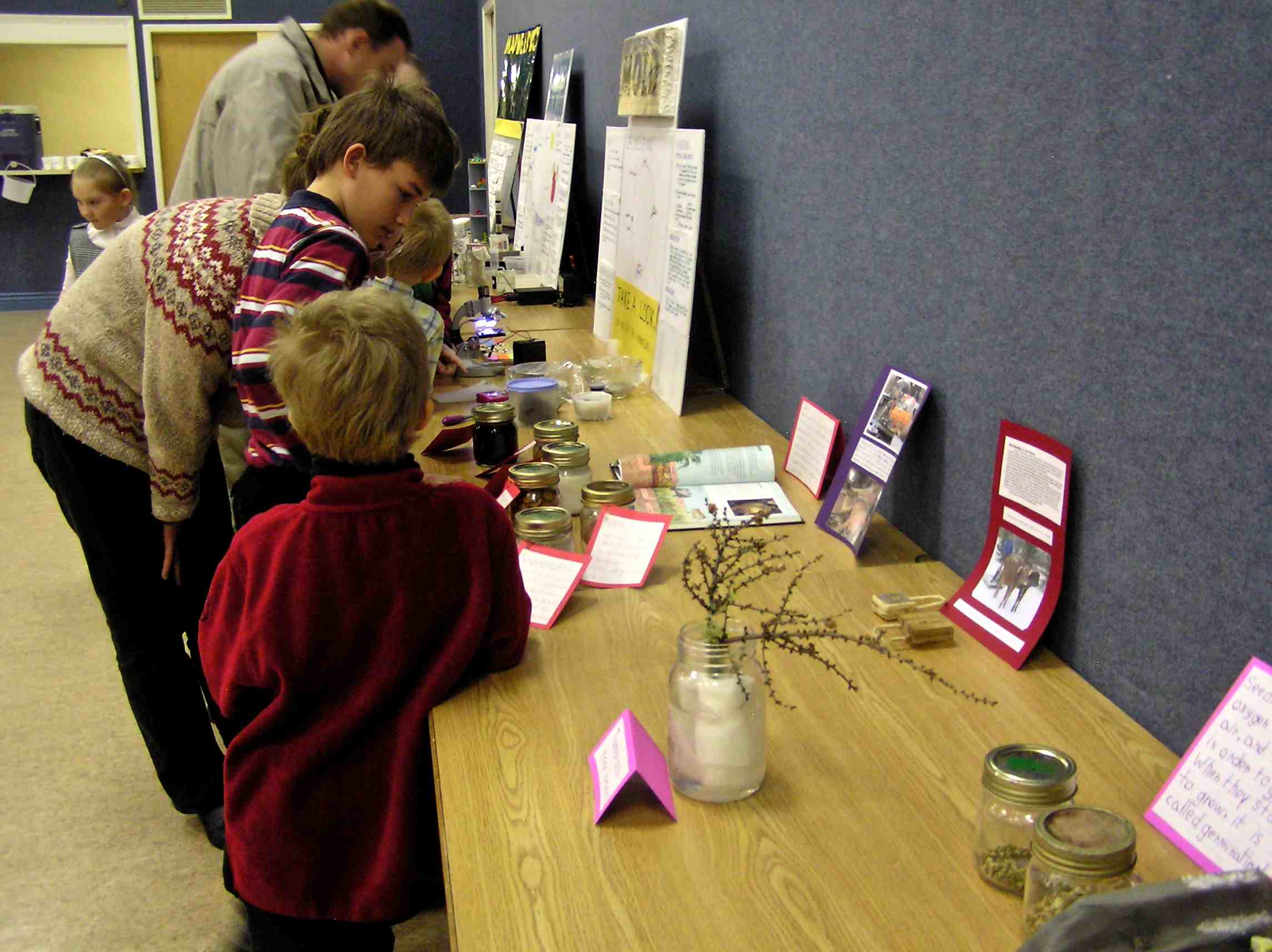Summer is a wonderful time for getting out to play and to explore the wonderful handiwork of God’s creation. Even though many of you suspend your formal homeschool studies during this time, I encourage you to use the summer for building greater momentum in your science program.
With other subjects now out-of-the-way (at least for a month or two), you may find it beneficial to encourage your children to explore the world around them – to notice things, to compare things – and to ask ‘why’ and ‘how’ and ‘what’. Let this be a purposeful use of your children’s summer time. I am sure that most of you already do this in one way or another.I suggest that you have your children include some sort of note-taking or record-keeping within their activities – and then save these notes, sketches and samples for deeper research when the formal home-education resumes in a month or two. For example: Have your children use a pencil and a sheet of paper to make texture rubbings of various types of tree bark. Make a sketch of the branch pattern and take a leaf sample for each type of tree. Save these items. When home-school officially resumes, research these items to greater depth – write a report and make a display.Following are some activities that your children might enjoy. Be sure to expand this list according to your children’s interests and aptitudes.Astronomy – use a sun filter to view sun spots through a telescope, watch the moon phases, count and name constellations, watch the meteor showers in August, build a sun dial, record shadow lengths at the same time each week.Botany – germinate different seeds, note the first and second leaf types and patterns, view the leaf parts and flower center using a strong magnifying
 lens, press and dry the flower petals and leaves, gather as many samples as you can.Biology – put samples of pond water or ditch water into jars, see how many different creatures you might find (use a microscope if you have one available), make sketches.Entomology – visit a local bee keeper and ask to see the brood chamber of an active hive to find the queen bee, cut apart a wasp’s nest, dig into an ant hill and draw the pattern of pathways, catch a few lady bugs and feed them some aphids. Meteorology – measure daily high and low temperatures, sketch cloud patterns, measure rainfall, note wind strength and direction.Geology – gather different kinds of rocks, break the rocks and look inside.Ornithology – see how many different kinds of birds you can find, note their color and size, learn what sounds each kind makes, collect a few feathers, study their nests.Physics – repair and tune your bicycle (or lawn mower, or any other mechanical device).Aviation – visit your local small airport, take note of airplane shapes and wing shapes, talk to a pilot, count the number and type and direction of airplanes flying overhead, build a kite and fly it.These are enjoyable ways to fill the summer. Doing so will help you add shape and depth to your children’s science studies, especially for those at the primary and junior grade levels. Having many such useful items and records on-hand will help you keep a good momentum in your home-school science program.
lens, press and dry the flower petals and leaves, gather as many samples as you can.Biology – put samples of pond water or ditch water into jars, see how many different creatures you might find (use a microscope if you have one available), make sketches.Entomology – visit a local bee keeper and ask to see the brood chamber of an active hive to find the queen bee, cut apart a wasp’s nest, dig into an ant hill and draw the pattern of pathways, catch a few lady bugs and feed them some aphids. Meteorology – measure daily high and low temperatures, sketch cloud patterns, measure rainfall, note wind strength and direction.Geology – gather different kinds of rocks, break the rocks and look inside.Ornithology – see how many different kinds of birds you can find, note their color and size, learn what sounds each kind makes, collect a few feathers, study their nests.Physics – repair and tune your bicycle (or lawn mower, or any other mechanical device).Aviation – visit your local small airport, take note of airplane shapes and wing shapes, talk to a pilot, count the number and type and direction of airplanes flying overhead, build a kite and fly it.These are enjoyable ways to fill the summer. Doing so will help you add shape and depth to your children’s science studies, especially for those at the primary and junior grade levels. Having many such useful items and records on-hand will help you keep a good momentum in your home-school science program.

